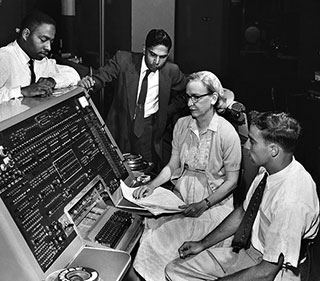Course Description
This subject examines some of the many ways that contemporary historians interpret the past, as well as the multiple types of sources on which they rely for evidence. It is by no means an exhaustive survey, but the topics and readings have been chosen to give a sense of the diversity of work that is encompassed in the …
This subject examines some of the many ways that contemporary historians interpret the past, as well as the multiple types of sources on which they rely for evidence. It is by no means an exhaustive survey, but the topics and readings have been chosen to give a sense of the diversity of work that is encompassed in the discipline of history.
Course Info
Instructor
Departments
Topics
Learning Resource Types
assignment
Written Assignments
Instructor Insights

Grace Murray Hopper was an American mathematician who helped devise the UNIVAC I keyboard along with COBOL, a computer programming language designed for business use. The history of technology and business is discussed in Session 11 of this course. (Image courtesy of the Smithsonian Institution on Wikimedia Commons. License CC BY.)










